OK, Q&A Time…
- Anna, I just gave up sugars and grains two days ago. When can I have alcohol on this damn diet?
- What kind of alcohol can I have and why is it only a vodka soda?
- Why can I not really tolerate alcohol like I used to?
- Ever since I went low carb, why am I such a cheap date?
- Also, can you please post a recipe for an alcohol pizza cheesecake made entirely out of cauliflower?
These are the questions I hear almost on a daily basis from all y’all good people. I know how much we all love our liquid courage and evening cocktails, but things need to make a shift when you cut out processed sugars and grains for good. And sometimes that shift might be your boozing habit.
Now, I love cocktails so much, I put an entire chapter of them at the end of Eat Happy Too. Attempting to give lower carb options, I’ll use the whole fruit purée or make them labor intensive so you won’t shake up as many at one time (insert evil laugh here). So know that I’m writing this post to share information so that if and when you choose to have a drink, it’s an educated decision.
A few quick things before I turn it over to Craig Berndt, who was so kind to agree to let me repost his words of wisdom here.
- When going low carb, beer has gotta go. Count on having it as a treat on a very rare occasion. It’s called liquid bread for a reason.
- Wine should be considered a treat as well. You cannot have your nightly glass or two of wine and expect the scale to shift (see Craig’s science below).
- While I’m at it: the wine companies that advertise 1 gram of sugar per liter are lying liars. No company is able to promise 1 gram of sugar per liter. It doesn’t exist. Any winemaker worth their salt will make a wine with no sugar left in it but the un-fermentable remaining grape sugars. The rest of the sugar is turned into alcohol. But the average remaining residual sugar will be 3-4 grams per glass.
- Distilled liquors (vodka, whiskey, rye, tequila, bourbon, gin, rum, etc) have all residual sugars removed, which is why liquor is the first choice for low carb drinkers. If you add sugar in the form of fruit, juice, liqueurs (liquor with sugar and flavoring), or even the gorgeous cocktail recipes in Eat Happy Too, you are loading up on extra sugar which will impede weight loss progress. This is why most low carb folks drink a vodka soda with a squeeze of lemon or lime.
- I know y’all love your dranks. BUT if you’re new to NSNG, why don’t you try doing 30-60 days without alcohol interference. It’s actually pretty cool. As Craig points out below, alcohol will stall weight-loss.
- If you are aiming for dietary ketosis, be forewarned, you will get hella hammered if you are in ketosis (again, see Craig’s Science Corner below). This goes double for ladies. Take it easy over there, folks.
- I’m not posting this to judge anyone. If you feel you have a problem, please reach out to someone you trust or a therapist for help.
- Alcohol is very fun and also completely overrated. Hence our collective love-hate relationship with it.
Now, onto the wisdom of Craig Berndt (originally posted in Vinnie Tortorich’s NSNG Facebook Group, my edits for grammar because I care about shit like the Oxford comma):
Alcohol has been independently produced by unconnected civilizations all over the world. Egypt, China, Sub Saharan Africa, India, Europe, etc. It’s likely to have resulted from an accidental process that was refined over centuries. Most importantly though, people love to get drunk. Vinnie has provided some guide lines that I certainly agree with, but what are the effects of alcohol and how is it digested?
Alcohol is made from sugar, but isn’t sugar. It is the product of various yeasts eating glucose and pooping out alcohol and burping carbon dioxide (CO2). To be clear we’re talking about Ethanol alcohol. There are various other alcohols out there (methanol, etc) that are synthetically derived, but we’re talking about the good, old drinking kind. The other stuff will kill you or make you blind.
To create alcohol, a sugary medium is combined with yeast (either added or naturally occurring). Barley, rice, hops, etc. for beer; grapes for wine; various grain mash concoctions for liquors. Beer is left largely whole, in that the liquid contains the left over grain juice and flavorings. Wine is filtered and also left largely whole, although there are various combination, sweetening, oaking etc techniques. Spirits are much higher in alcohol than the yeast can survive. The fermented grain (mash) is heated to a temperature where the alcohol will evaporate but water will not (~173 degrees F). The alcohol gas is collected and concentrated. This product is now further flavored with wood barrels, fruit, etc or served as is. It is important to know this because beer contains tons of left over grains and sugars. Wine too. Liquor/spirits are ok for NSNG because they remove the alcohol from the left over sugar and grain. One shot of vodka is infinitely less sugary than a beer with the same amount of alcohol, due to the delivery method. Wine is usually rated with an “RS” or residual sugar number. This shows you how much sugar is left after fermentation. This is used by wine experts to determine how dry a wine is. The lower the better, make your decisions accordingly.
OK, so now you’re drunk and have avoided the sugar and grain traps where does the alcohol goes. 5-8% will evaporate out of your mouth, in your breath (same thing for mouth breathers), off of your skin, and go out in your pee, leaving 92-95% of it for your body to digest. Alcohol is one of the few things that bypasses normal digestion and enters your blood whole, much of it directly from the stomach, the rest in the intestines. That’s why you get drunk, it hits your brain largely in tact and why we can get a measurable BAC (blood alcohol level) when you get arrested for DWI/DUI.
The first thing your liver does is use an enzyme to snap off a couple of hydrogen atoms/ions from the alcohol, so it can’t continue to make you drunk. That turns alcohol into Acetaldehyde, which is a close relative of Formaldehyde. Those hydrogen ions are very acidic and un-fun for your body to deal with as well. So we’ve gone from an intoxicant to a pile of acid and a poison. Sweet. Acetaldehyde is then converted by another enzyme, by pulling another Hydrogen ion off, into Acetyl Radicals. This is basically vinegar. Which makes sense, because vinegar is made from wine and other alcoholic beverages sitting around. What normally takes months or years, your body can do in a matter of minutes or hours through enzymes, which are chemicals that force a chemical reaction to occur inside the body. Now we have vinegar and a lot of acidy mess. We’re getting there. Now we have something your body can digest. Another Enzyme grabs the Acetyl Radical and it can enter the Krebs Cycle (see high school biology), and be digested into energy. The end product is a tiny amount of water (far less than is consumed in all of this fuckery), carbon dioxide, and about 7 calories per gram of alcohol you started with.
Why does all of that matter? Well, alcohol is a few things: inflammatory, weight loss stalling, and really fun. To take them in reverse order: it’s fun because it messes with your brain, then goes away by an existing natural process. Your liver will stop all other digestion to get rid of alcohol. It is poison. It also enters the Krebs Cycle just like fat and sugar do, and can provide energy, so your liver’s work is not wasted. If you drink regularly you are interfering with fat burning by starting and stopping the process- yes even vodka sodas. Most importantly, it is inflammatory. That is why I took the time to discuss the above process. At each stage of digestion, Hydrogen ions, the net result of an acid in water, are being tossed out in to your body. H+ ions are like wrecking balls in your body. They will rip an electron off of something and change that chemical’s use and characteristics. You can deal with some of that, but the more you put in, the more damage you do. Furthermore, Acetaldehyde isn’t always fully digested, leaving a Formaldehyde like substance knocking around your liver. I don’t think I need to detail why that’s bad.
Also remember the term Acetyl Radical…the vinegar crap? What do you hear on TV all the time? “Free Radicals” are bad… These are essentially substances in your body that are particularly reactive. They cause oxidation, or the ripping of electrons off of other chemicals.It has nothing to do with oxygen per se. Antioxidants counter act this effect with reduction. Google “redox” for details. Bottom line, it’s another wrecking ball in your body akin to those H+ ions. These are the things that make alcohol likely to contribute to cancer and other diseases. Study after study has shown that all of the above stages of digestion are inflammatory by contributing these acidic wrecking balls into your system. Since we have the ability to mitigate them, it takes a very long time to do damage… but they will eventually win out.
There is also very little you can do to further mitigate the effects. Antioxidants (i.e. coffee, vitamin C, etc.) may help in large doses to help eat up the radicals, but there is no conclusive study to show how much they help or how much to take.
I don’t want to get into hangovers in detail here. It’s basically a water and sodium deficiency along side the above poisons that you need to hydrate and dose with electrolytes to get over. Electrolytes are consumed by all of the above enzyme activity as well as consumed by knocking down the acidic nature of the byproducts of alcohol.
SO, for NSNG: drink spirits only to avoid sugar and be aware of what is happening inside your body when you make your choices. The same as everything else.
Want more Eat Happy inspiration? Make sure you sign up for the 31 Days of Meals plan and free recipe sampler here!







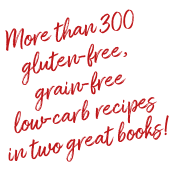
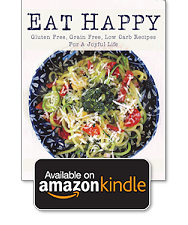


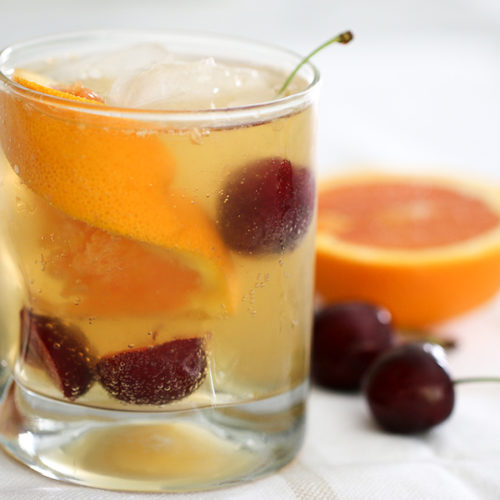
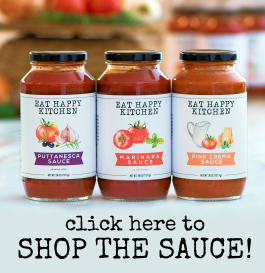

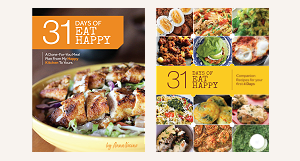

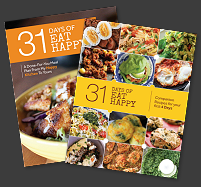

Leave a Reply